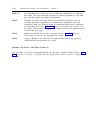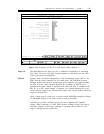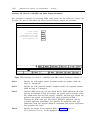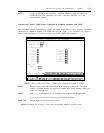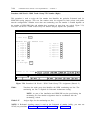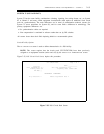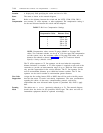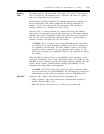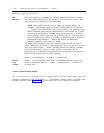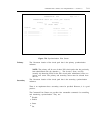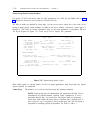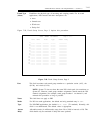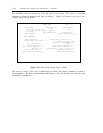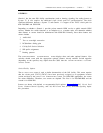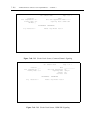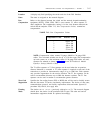
7-110
ADMINISTRATION OPTIONS AND REQUIREMENTS — SYSTEM 75
Maintenance Options or Parameters
Slip
This option enables (y) or disables (n) switching between the primary, secondary,
Detection and internal high-accuracy clock. The decision to switch from one source to the
other is based on an internal slip count calculation.
NOTE: Those DS1/T1 facilities that are used to provide the primary and
secondary synchronization reference should be administered for slip detection
y. Typically, those other DS1/T1 spans that are used for data applications and
deemed important should also be administered for slip detection. All T1-spans
connecting channel banks are excluded, unless the channel bank is externally
timed. Normally, DS1/T1 spans that are used exclusively for voice and which
are not assigned as the primary or secondary synchronization source should be
administered for slip detection n. Refer to the network synchronization
diagram to determine which option to choose.
The digital switch maintains a slip count record for each DS1. The slip count is
used to determine if the T1-span is experiencing errors and, if so, the severity of the
errors (type alarm). Option y enables switching between the primary, secondary,
or internal high-accuracy clock. If as many as 50% of those spans that are
administered for slip detection are experiencing slips (with respect to the primary),
then a decision is made to switch to the secondary.
Option y is equivalent to a 1 in field 10 of procedure 260,
Remote
Loop
Around
Option y is only used during some phases of DS1/DMI diagnostic testing. The
normal or operational choice is n. Option n is equivalent to a 0 in field 11 of
procedure 260.
Network Synchronization Options
The
SYNCHRONIZATION PLAN screen is used to specify which of the two DS1/T1-spans (that were
previously administered with slip detection y) is the primary reference source and which is the
secondary reference source. Figure 7-56, Synchronization Plan Screen, depicts this procedure.



